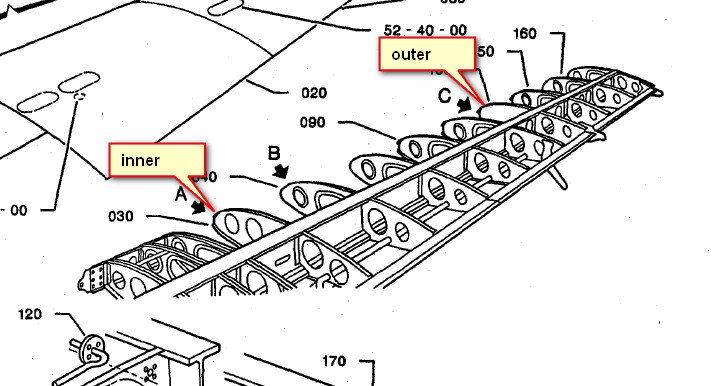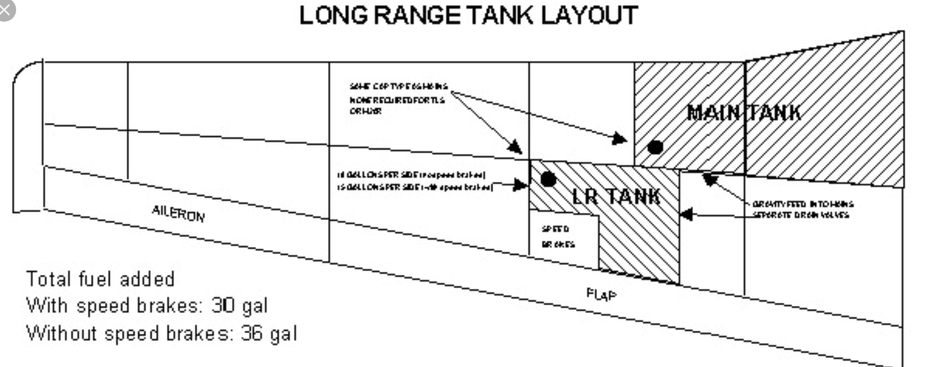This is not a complete joke…
The TB20 wing is formed, like most metal wings, from some skin, and some bulkheads. The bulkheads (also called “ribs”) have holes in them, for weight reduction and, inside the tank, to allow the fuel to flow around.
The fuel tank is formed by two bulkheads which obviously don’t have holes in them.

The inner one has holes but they are blocked, with fuel gauge sensors and whatever…
A long time ago I suggested to Socata that they simply move the outermost bulkheads without the holes out to the next position. The inboard ones would stay (there is the landing gear etc etc) but moving the outboard ones would give you maybe 100 USG instead of the present 86. Nowadays they don’t get involved with TB work; this was years ago.
One would not actually move any bulkheads (that would be a huge de-skinning job). One would create inspection holes and via those create holes in the current outermost bulkhead, and fabricate blanking caps for the holes in the next bulkhead up.
And one would need to move the filler caps outwards correspondingly.
Engineering-wise, a fairly trivial mod. I believe such a mod has been done for some types (PA46?).
Maybe there would be a structural issue due to the extra weight, especially so far out, but a TB20 is built solidly.
The range gain would be substantial.
What would be the procedure for doing such a mod? For a one-off, in the FAA world, it would be doable as a Field Approval but I guess would need some DER work (structural analysis). If you wanted to spread the cost, it would need to be an STC.
@mh might know more about the European (EASA) context.
That STC would have to include an additional M&S orange juice bottle!! 
The monroy longrange tanks for the Mooney work exactly that way

You may want to contact them for what was necessary to get the STC.
Jose usually is very responsive.
Have you thought about tip tanks?
If it was such a trivial thing, you’d wonder why they didn’t design it with larger tanks?
The only two things I can think of are:
1. Some structural issues that the extra weight causes additional structural reinforcement elsewhere, or
2. People tend to consider the useful load with full fuel tanks. By having larger thanks, people tend to consider there to be less useable weight for passengers and baggage. So it’s a marketing consideration.
The PA46 mod is purely a new fuel cap being added. There is no modification to ribs or anything internal to the wing. It adds 10 usg a side but you can get 16 in. The aircraft and spar was however originally designed to take the weight.
This modification would require some flight testing to investigate the effect on spin recovery due to the extra inertia that resulted from the fuel in the wing both with full fuel and a badly mismanaged fuel situation with one tank full and the other almost empty.
Peter wrote:
And one would need to move the filler caps outwards correspondingly.
Why?
Timothy wrote:
And one would need to move the filler caps outwards correspondingly.
Why?
Because of wing dihedral if you want to maximise the fuel quantity
This modification would require some flight testing to investigate the effect on spin recovery due to the extra inertia that resulted from the fuel in the wing both with full fuel and a badly mismanaged fuel situation with one tank full and the other almost empty.
That probably rules out even trying it. Would one not need a spin-exit parachute fitted for the test flight? @pilot_dar might know more…